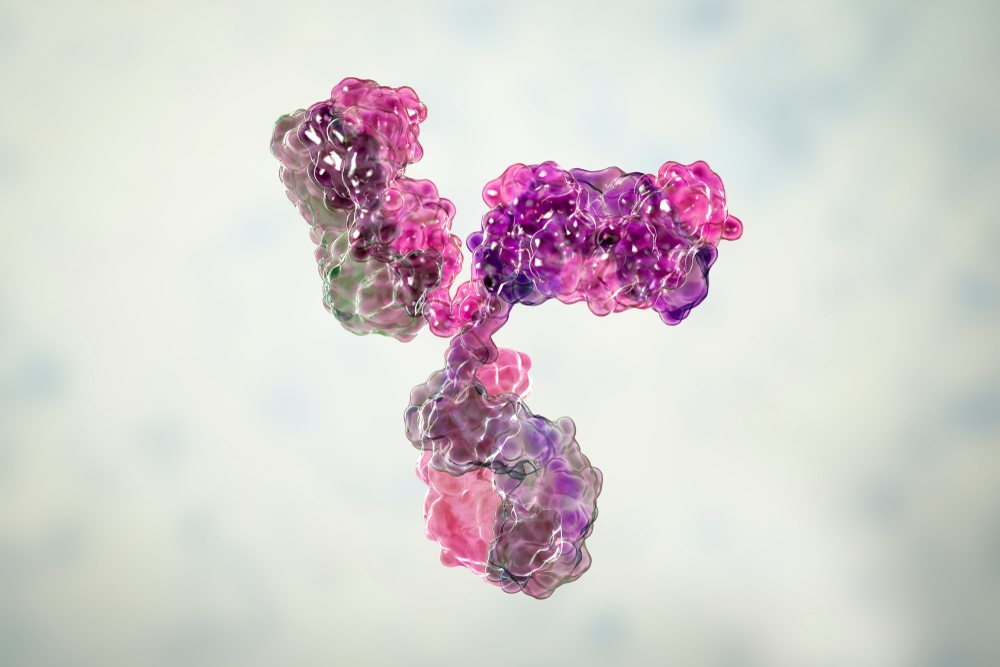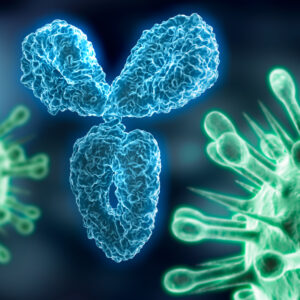RABBIT ANTI-LEGIONELLA PNEUMOPHILA LPS
Rabbit anti Legionella pneumophila LPS antibody is specific for L. pneumophila LPS and has been developed for use in ELISA and Lateral Flow Assay development.
PRODUCT DETAILS – RABBIT ANTI-LEGIONELLA PNEUMOPHILA LPS
- Rabbit anti Legionella pneumophila LPS.
- Purity 90%. Purified by Protein A from serum. Presented in PBS with 0.1% sodium azide.
- For use in ELISA and LFA. Antibody can be conjugated to colloid gold, HRP or FITC for detection and used with MAB12380 for capture. See our Matched Pair Antibodies for more information.
- Can be used with Goat anti mouse IgG HRP and PanBlock ELISA Blocking Buffer.
BACKGROUND
Legionella pneumophila is a Gram-negative bacterium of the genus Legionella and is the causative agent of Legionnaires’ disease, also known as legionellosis and a mild flu-like illness called Pontiac fever and Lochgoilhead fever (WHO, 2019). Legionella was named after an outbreak in 1976 among people attending a convention of the American Legion, an association of U.S. military veterans, during which 221 persons were infected and 34 ultimately died.
L. pneumophila and related bacteria are common in natural water sources such as rivers, lakes and reservoirs, but usually in low numbers. However, after entering man-made environments (e.g. hot water tanks, hot tubs, and cooling towers), they can reproduce rapidly under the right environmental conditions. People contract Legionnaires’ disease by inhaling water aerosols, suspended in the air, containing the bacteria. Certain conditions increase the risk from Legionella including (1) if the water temperature is between 20-45 °C, (2) breathable water droplets can be created and dispersed as aerosols, (3) water is stored and/or re-circulated, (4) there are deposits that can support bacterial growth providing a source of nutrients for the organism e.g. rust, sludge, scale, organic matter and biofilms.
L. pneumophila invades human macrophages and protect themselves within a membrane-bound vacuole allowing them to multiply within the infected cells. Symptoms of Legionnaires’ disease include cough, high fever, muscle pains, shortness of breath and headaches, and sometimes may also include vomiting, nausea, and diarrhoea. Legionnaires’ disease is not known to spread from person to person and is generally treated with antibiotics. Several methods are available for the detection of Legionella infection including culture, serological tests and qPCR, although no vaccine is available for legionellosis. Genetic modification of L. pneumophila has been shown to increase the mortality rate in infected animals to nearly 100% and it may have been tested as a biological weapon by some countries (Gilsdorf and Zilinskas, 2005).
REFERENCES
- Legionella and the prevention of legionellosis. World Health Organisation (WHO), 14 July 2019.
- Gilsdorf JR, Zilinskas RA (2005). New considerations in infectious disease outbreaks: the threat of genetically modified microbes. Clinical Infectious Diseases. 40 (8): 1160–5.
- Health and Safety Executive (HSE). Legionella and Legionnaires’ disease. 2019.


